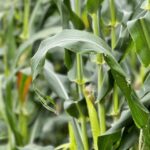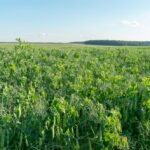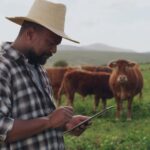Sheep farming is a cornerstone of rural livelihoods in the Karoo, with wool production offering an important income stream for many farmers. However, producing high-quality wool can be challenging, especially for small-scale or resource-limited farmers. Fortunately, improving wool quality doesn’t always require heavy investment. With practical, low-cost strategies tailored to the Karoo’s unique environment, farmers can boost wool quality and increase their profits without breaking the bank.
Wool quality is determined by factors such as fiber diameter, length, strength, and cleanliness. These traits are influenced by genetics, nutrition, health, and general flock management. Making small, affordable improvements in each of these areas can result in significantly better wool over time.
One of the most cost-effective ways to enhance wool quality is through selective breeding. In the Karoo, many farmers already use Merino sheep, known for producing fine wool. By identifying and breeding only from animals with desirable fleece characteristics—such as soft, dense, and uniform fibers—farmers can gradually improve their entire flock. Keeping simple records of each sheep’s fleece quality and weight can help guide breeding decisions without the need for expensive technology.
Nutrition plays a key role in wool growth and strength. Even in the dry Karoo climate, sheep can thrive on locally available resources when supplemented strategically. Providing consistent access to clean water, mineral licks, and protein-rich feed during dry seasons helps maintain fleece quality. Investing in drought-resistant forage crops or rotating grazing camps to prevent overgrazing can improve pasture quality and reduce feeding costs over time.
Good animal health is essential for wool production. Parasites, skin infections, and stress all reduce wool yield and quality. Regular dipping, deworming, and vaccinations—done using local veterinary services or farmer co-ops—are cost-effective ways to keep sheep healthy. Farmers should also handle sheep carefully to avoid stress, bruising, or wool breakage. Shearing should be done by trained workers or through community shearing groups to ensure the fleece remains clean and intact.
Maintaining a clean environment also helps improve wool quality. Dust, plant debris, and manure can contaminate wool and reduce its value. Keeping kraals clean and using raised feeding troughs can minimize contamination. Some farmers in the Karoo use simple shade structures or windbreaks made from local materials to reduce dust and exposure to extreme weather, both of which can impact fleece condition.
Farmer collaboration is another valuable resource. Joining local agricultural groups or wool grower associations allows farmers to access shared equipment, attend training workshops, and stay updated on market requirements. Peer learning and mentorship from more experienced farmers can provide insights into improving flock management at minimal cost.
Record-keeping doesn’t require fancy tools. Even a notebook can help farmers track lambing rates, wool weights, shearing dates, and health treatments. This information is key to identifying what works and planning future improvements.
By focusing on affordable, practical methods suited to the Karoo’s semi-arid conditions, sheep farmers can gradually enhance wool quality and command better prices at market. It’s not always about big investments—consistency, attention to detail, and using available resources wisely can lead to meaningful progress. For many farmers in the Karoo, the path to premium wool starts with small, smart steps taken one season at a time.
Join 'Farmers Mag' WhatsApp Channel
Get the latest Farming news and tips delivered straight to your WhatsApp
CLICK HERE TO JOIN






